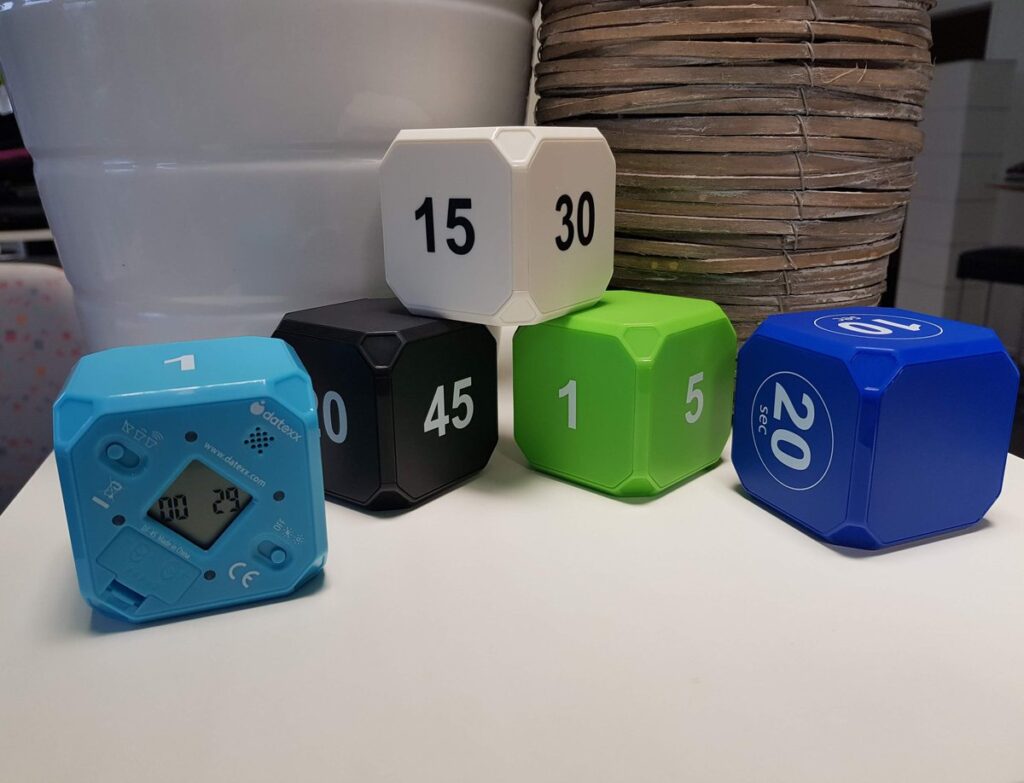- The Pomodoro Technique alternates between 25-minute working blocks and 5-minute rest periods
- After 4 Pomodoro work blocks, take a 20-30 minute break
- The key to Pomodoro is to take breaks that completely take you away from your work and to physically record each Pomodoro in a notebook.
Working from home can be very hard. Recent studies have shown that working from home has left many employees overwhelmed. Distractions can be more frequent in a home environment making it difficult to get work done. We are going to go over how the Pomodoro Technique can increase working from home productivity significantly for remote workers.
What is the Pomodoro Technique?
In the late 1980s, Huey Lewis and News were on top, the Berlin wall was about to fall, and a management consultant named Francesco Cirillo had just invented a productivity technique that would endure for more than 30 years. This was the Pomodoro Technique, a way of time blocking out defined tasks without interruption followed by rest periods that can increase productivity immensely.
The idea is simple. When you need to do a task (really any task) set a kitchen timer to 25 minutes. You will work uninterrupted for these 25 minutes. No email. No text messages. No bathroom breaks. And certainly no Netflix or Disney Plus. Work until that kitchen timer rings. This is called a “Pomodoro.” Once this is complete, put a checkmark on a piece of paper. The intention is to use an actual physical piece of paper and a pen. There is something about this old tactile way of recording progress that almost cements your achievement. You can, of course, use an app on your phone to record this as well. You will then take a short 5-minute break to do something completely non-work-related. Have a coffee, stake a short walk, pet the cat. Just don’t do any work. Then start again! After every 4 Pomodoro’s, you should take a longer 20-30 minute break. This will give you some time to decompress. That’s it! Simple right?
You will be surprised how much can be accomplished quickly when you take interruption and multi-tasking out of the equation.
History of Time Blocking and why it works
Time blocking, or the idea of planning out blocks of time in your day is about as old as the idea of a calendar itself. People like Benjamin Franklin meticulously laid out their days in a personal calendar which gave time blocks for things like reading, organizing, and even sleeping. Of course, this is overboard. But the idea of time blocking has been proven to have a positive effect on many people’s productivity. But why is that?
Simple frameworks are often the most effective. And that is what Pomodoro has going for it. Pretty much anyone can understand its steps. You also don’t really need any fancy equipment to practice it.
Multitasking simply does not work
On top of simplicity, Pomodoro directly challenges one of the worst ideas in work culture: multi-tasking. We have all fallen victim to the draw of having 30 different browser tabs open, shuffling through emails, Slack messages, Word Docs, and god knows what else… But research shows that multi-tasking either doesn’t work at all, or it severely limits productivity among the vast majority of workers. A study by Adler et al in 2012 showed that increased levels of multitasking lead to a significant loss in the accuracy of results. In other words, the more multitasking that was done, the worse the quality of the work was. As the author notes “The illusion of productivity comes at the expense of performance effectiveness.”
A study in 2012 by Buser and Peter showed that scheduling significantly increases productivity. The found that sequencing tasks, as opposed to the free-form organization of tasks performed better in productivity tests. Pomodoro is founded on the principle of structured sequencing to knock tasks off your to-do list.
How does the Pomodoro Technique reduce interruptions?
Pomodoro forces the user to hone in on one specific task for the whole time block. Interruptions are limited and the user does not stop until the timer goes off. It is like a form of blinders that keep you moving on one task instead of spreading your effort across many. This makes intuitive sense to most. Of course, the quality of your work will be better if you solely focus on it. But the idea here is that we are way too susceptible to the promise of working quickly on many tasks. By making multi-tasking impossible, the Pomodoro Technique creates an environment that is compatible with creating detailed and accurate work of quality. For those working from home, it means that distractions can be limited and tasks slowly ticked off the to-do list, instead of mediocre results on many tasks through multitasking.
Taking breaks saves the soul
For those of us that were thrust into the world of working from home, we know that going for a walk is a godsend. Taking breaks, it seems, is a necessity for keeping productivity levels high. Without breaks, people are much more likely to burn out. In the US 29% of employees that are working from home report that they struggle with work-life balance. And 31% have had to take a mental health day recently due to overworking. The Pomodoro Technique builds-in the need for breaks. In fact, it mandates it. If you stick to the method, you’ll feel much more productive and less likely to experience burn out.
Chunking off smaller tasks staves off procrastination
On the flip side of burn is procrastination. With all of the competing things happening at home during the day, procrastination is a real problem. Diana Shi writes succinctly in a recent article on Fast Company: “Even small tasks, which seemed easily completed before, are feeling harder and harder to check off. Suddenly, minor, clerical tasks can feel like climbing a mountain.” It is that feeling that you simply have so much on your plate that you don’t even know where to start. Again, Pomodoro is designed to naturally avoid this feeling. The intention is to find tasks that can easily be split into these 15-minute segments, making what may have seemed like a mountain, more like a speed bump. Of course, this does present a small problem with the Pomodoro Technique that we will explore below. What if you have a much larger project that clearly needs blocks of longer than 25 minutes?
Why 25 minutes? Can it be longer?
Yes! I personally find something more like a 50-minute time block with 10-minute breaks to be the sweet spot for my particular line of work. Any less and I simply get interrupted before I get in a state of flow. In fact, there are whole communities that have latched onto different versions of the Pomodoro Technique, with longer and shorter time blocks. What remains the same though, is the fact that it is a planned time block with rest periods. As long as this principle is obeyed, the same productivity gains are possible.
There are even Pomodoro-type timers available that allow you to easily set timers for different intervals simply by flipping a cube. Check out one of our favorites, the TimeCube Plus here.
How to use the Pomodoro Technique properly to increase working from home productivity
We have gone over the theory behind the Pomodoro Technique, but how can we use it most effectively?
How do I use a physical Pomodoro timer?
You’ll find all kinds of physical Pomodoro timers out there. The classic one is very much like a basic egg timer for the kitchen, but it is shaped like a tomato. There is something helpful with having a physical timing device instead of a digital clock or Apple Watch App. The physical, tactile feel can ground you back into the world when the timer goes off, creating what is called a “buffer state.” This is the same mechanism that helps you decompress when taking a break after a long intense task.
In order to use a classic egg or Pomodoro timer, it is super simple. Just twist the clock to the desired time and let go. The mechanical timer will slowly twist its way towards ringing its internal bell. We actually prefer something more like the TimeCube Plus, which has a different time written on each of its 6 surfaces. You just pick up the cube and place it with your desired time facing up to start the timer. This is particularly helpful for people following a Pomodoro-style method where they are repeating the same times continuously.

Do I have to use paper when using the Pomodoro Technique?
Ideally yes. I have found that a basic notebook can be the best way to do the Pomodoro Technique. This is because it makes a natural break from the computer work I am generally doing during my time block. It marks a physical change for your body which moves you into the physical world and naturally into your rest period. Yes, this sounds rather yogic… But you will really appreciate the way that this physical method helps ground you during Pomodoro sessions.
What are the best apps to track time while using Pomodoro?
However, I know others may prefer to use a digital tool to record Pomodoros so they can keep detailed stats of their sessions. Focus Booster is an excellent app for keeping track of your Pomodoros and it also integrates its own digital Pomodoro timer if that’s your kind of thing. It also works across a myriad of platforms including iOS, Android, Mac, and PC which is a bonus.
Wearables and the Pomodoro Technique
A natural app for a wearable device is a Pomodoro tracking app. After all, your watch lives right on your wrist. Some of the best ones link into a full-fledged app that can track your stats and even act as to-do lists. Right now the winner on iOS for the Apple Watch is Focus. For those in the Android Wear OS crew, you can’t go wrong with either Wear Pomodoro or 5217. Don’t be weirded out by the default setting on 5217 (52-minute blocks followed by 17-minute breaks), you can actually customize this if you pay a small fee. It’s actually worth it since this app is so polished. It’s also nice to have an app that you can customize the blocks and rest periods to your liking.
One beauty of wearable Pomodoro apps is that they can just vibrate when the timer goes off, a must for those working from home with a family member close by. You really don’t want an obnoxious beeping sound going off every 25 minutes with your wife working 10 feet away…
Integrating Pomdoro with task management with Toggl
If you do want to keep everything digital with your Pomodoro’s I highly recommend something like Trello or Todoist as your task management software. Not only are they great todo applications, but they work very well with my secret Pomodoro Technique weapon: Toggl. Toggl is an app that is used for time tracking generally. But there is a setting in its Chrome extension that allows you to switch to a Pomodoro mode. This means that it integrates your 25 / 5 structure into its count-down timer. Not only that, but you can now initiate a Pomodoro directly from Trello or Todoist, keeping a record of how many Pomodoro’s it took to complete a specific task. Now that is taking it to the next level!
What do I do if someone interrupts me during a Pomodoro?
Don’t worry about it! Life happens. The beauty of Pomodoro is that you can make of it whatever you want. Just pause the timer if someone needs your attention. Just try to turn off your instant messaging notifications during your Pomodoro blocks.
What if I am on a roll? Should I stop at 25 minutes?
No! As mentioned earlier, I follow more like a 50 / 10 system with my time blocking. I only landed on this once I realized that the traditional 25 / 5 model was consistently interrupting me out of being “on a roll.” But you can always just continue a task either right away or after a quick break. Remember, its the rest period that really helps in the Pomodoro Technique. But if you feel you need to adjust your timer, do it!
How to make the best out of your 5 minute Pomodoro breaks
5 minutes is really not a long time. So use it to its fullest. My favorite is going downstairs and getting tea or coffee. This gets me up out of my chair and into something completely away from work distractions. I purposely leave my phone on its charger and try to be “present” while on this 5-minute break. For my longer 20-30 minute break, I tend to take a walk outside or do some cleaning around the house. This physical activity really helps me reset my brain and get ready for my next work task.
What are some alternatives to Pomodoro?
As mentioned above, there are all kinds of time blocking alternatives to Pomodoro. Other “word rhythm” systems include:
- Desktime: 52-minute blocks followed by 17 minute rest periods
- Ultradian rhythms: 90-minute blocks followed by a longer extended rest period (30 minutes or more)
- Flowtime Technique: A more free-flowing technique relying on recording interruptions and taking short breaks
All of these use the same basic principles to Pomodoro that have been proven to increase working from home productivity.
Why the Pomodoro Technique might not be for you
Sometimes people just aren’t made for time blocking. For example, if you tend to get into extreme flow states and fly through larger projects for hours on end, you may not need time blocking. However, do recognize that break periods are not just a “nice to have.” They are necessary to make sure you don’t burn out.
Similarly, there are a small number of people who’s jobs totally jive with multitasking. Sometimes being nimble and quick at very short tasks simply does not make sense for something like Pomodoro.





1 Comment